Until recently, our Artefact Conservation lab was filled with beautiful Indian objects waiting to go into the Indian Encounters exhibition. Among them were six incredibly beautiful and detailed miniatures on paper, set inside very fragile and colourful Indian lacquer frames. I was lucky enough to be the conservator who got to finish off the conservation of these lacquer frames.
Completing the conservation was one challenge, but getting these fragile objects from our labs to the museum exhibition space was another. Although it isn’t a long distance between the National Museums Collection Centre at Granton and the exhibition space at Chambers Street, the difference between outside and inside temperatures can be a big problem for this type of object.
Part of our job as conservators is to design packing solutions to deal with these conditions and get objects safely from one place to another. In this case conservators and curators put their heads together and thought of a packing solution that would get them to the museum in perfect condition. This is what we came up with:
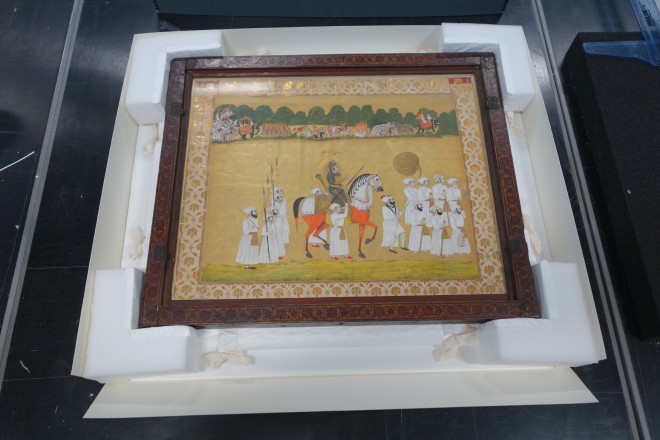
All the materials used are chosen because they have passed tests which show they won’t change over time, and won’t put out harmful gasses which could affect the objects inside. Everyday glues, for example, often emit harmful gasses which could corrode the metal hinges on our miniature’s frames or alter the paint colours. We managed to avoid the use of glues entirely in our packaging for the miniatures.
These boxes will serve as storage boxes for the miniatures once they return from display in the exhibition. The outer box consists of special cardboard with a drop front. This makes it possible for us to slide the frames on a board over the dropped lid instead of lifting it out of the box. This makes the frames a lot easier to handle, in case further conservation work or research is made possible in the future. Inside, we put a board consisting of two layers of correx (corrugated plastic) sheets, orientated at 90 degrees to each other, which makes them much sturdier when moving the board around the conservation lab with a heavy lacquer frame on top.
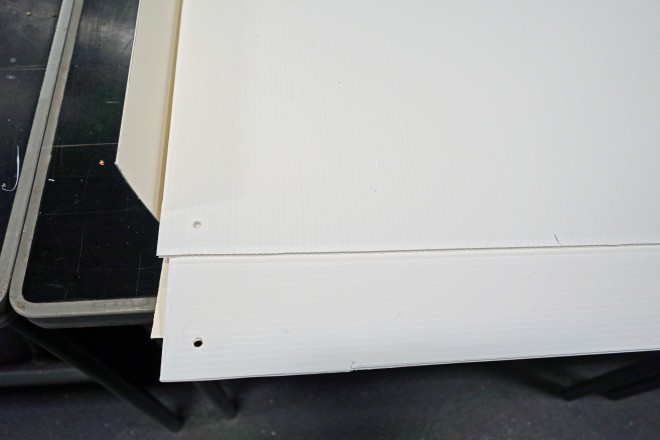
Our objects get protected from vibrations and bumps during journeys by lying on cosy cushions made from Tyvek. Conservators here at National Museums Scotland find these cushions useful for just about everything in our everyday work. Tyvek is a material with various applications; you have probably seen it in building construction or as a material for maps and protective apparel for hospital use or even on crime scenes on television. Tyvek is made of high density polyethylene fibres, processed to form a non-woven fabric. This fabric is permeable for water vapour, but not for liquid water. Tyvek also has a very smooth surface, which makes it particularly suitable for protecting very fragile surfaces where flaking paint could be abraded by paper, or trapped in fibres and lifted off.
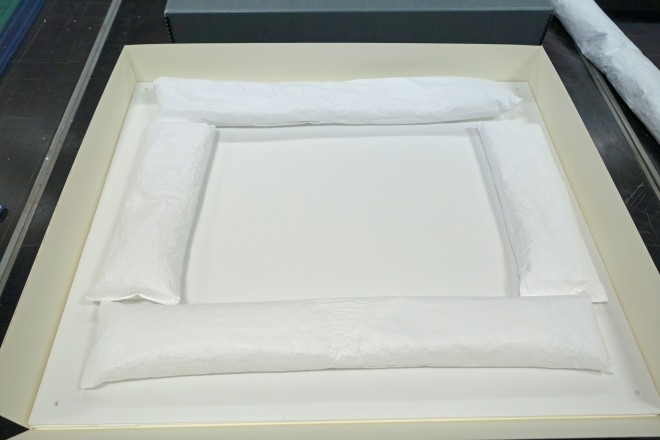
The transformation of this material into those cushions is done with the help of a group of nine dedicated volunteers of the Edinburgh Decorative and Fine Arts Society (EDFAS), who come to the Collection Centre once a month. They sew and fill cushions for different purposes, created padded hangers for the historic textile collection and even make storage bags for the bird skin collection.
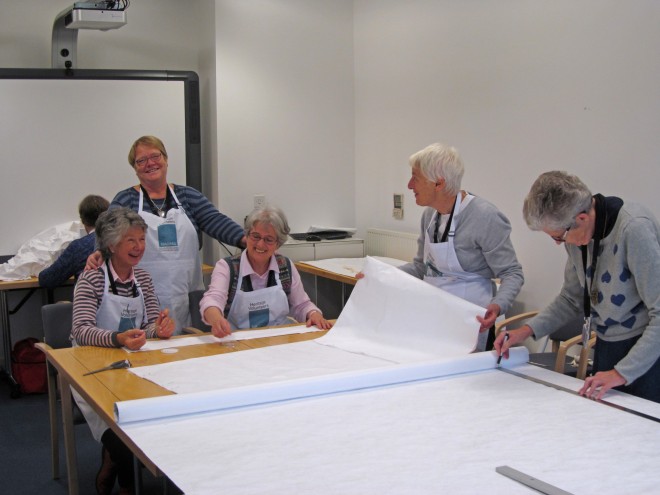
The cushions need to be held in place, so they don’t shift around during the trip. So the position of the cushions is marked precisely, and holes are drilled into the top correx sheet.

Cotton twill is then threaded through these holes and through a Tyvek tube, which was sewn for this purpose. This is to make sure that the fragile lacquer surface only touches Tyvek. You can see the tube being made and put in position in the photos below:
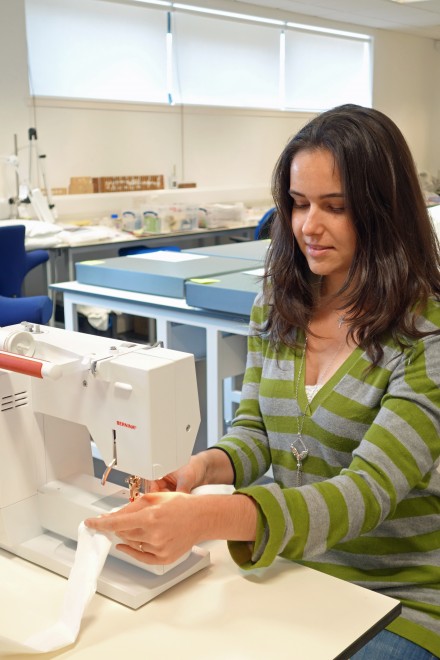
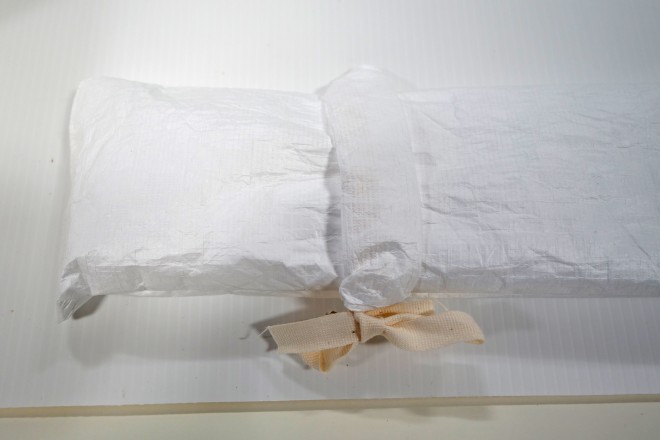
For easy gliding of the sheets on the bottom of the box, the twill tapes are threaded between the two sheets of correx.
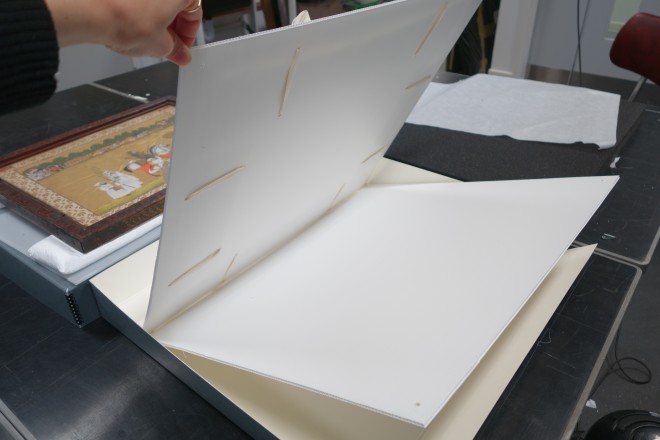
As a handle for pulling the sheets out, a Twill tape is inserted between the two sheets at the front. To stop the tearing of the Twill tape, I sewed a soft button hole before I inserted the plastic rivet.

The sheets are then attached to each other with plastic rivets and the packing is nearly ready.
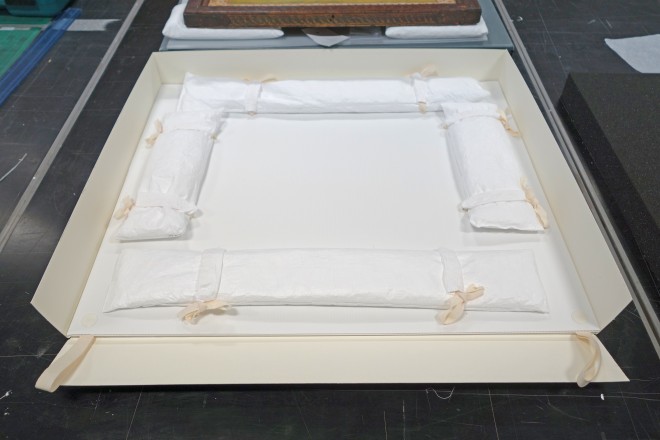
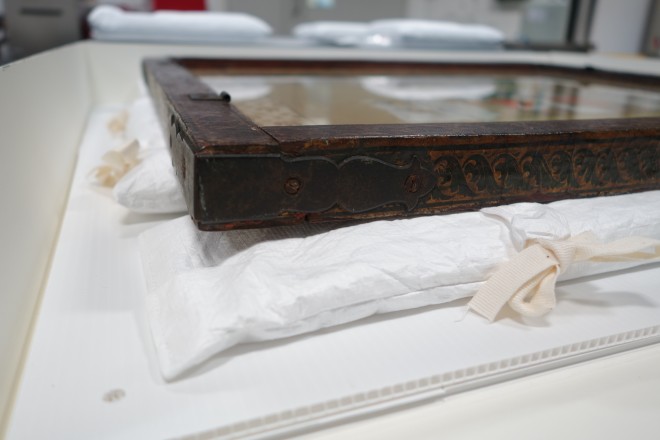
To prevent the miniatures from moving inside the box during transport, Plastazote corners are cut to measure and lined with Tyvek. Plastazote is a very stable polyethylene foam which we use frequently for packing artefacts for travel or storage. The blocks are cut to spare the cushions and frames and are then inserted into the space between the box and the lacquer frame of the miniatures.
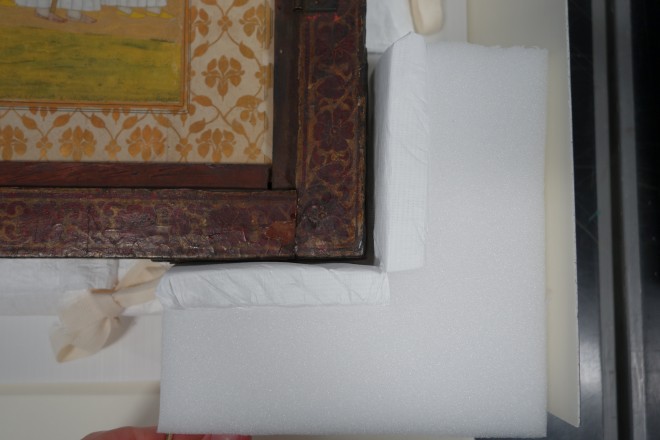

The last step is to put another cosy cushion on top of the frame, close the box, stick a label with photograph on it and it’s ready to go!
All of this took quite a lot of thinking out beforehand, but we got very quick at making them. It was all worth it as the delectable miniatures in their exquisite fragile frames all arrived at Chambers Street in perfect condition, ready for their installation in Indian Encounters where they are now waiting to be admired by you!

